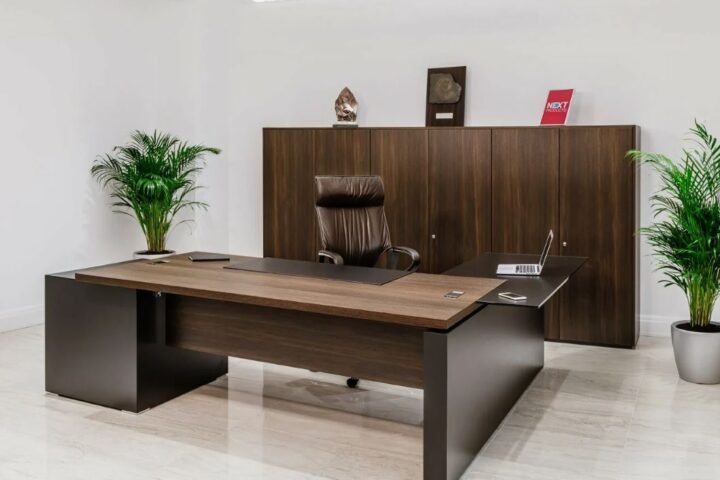When it comes to creating a productive and comfortable workspace, the significance of an office chair cannot be overstated. Many people underestimate how much the right office chair affects their health, focus, and overall work performance. Spending long hours seated in an uncomfortable or poorly designed chair can lead to back pain, neck strain, and decreased productivity. On the other hand, selecting an ergonomic office chair tailored to your needs can transform your work experience, enhancing comfort and supporting your posture throughout the day. With so many options available, it’s essential to understand what features make an office chair stand out and how to choose one that fits your individual requirements.
Ergonomics and Health Benefits of a Good Office Chair
Ergonomics is the science of designing furniture and equipment to fit the human body and its movements, minimizing discomfort and risk of injury. A well-designed office chair supports your spine’s natural curve and encourages proper posture, which is crucial in preventing musculoskeletal problems. Features like adjustable seat height, lumbar support, armrests, and tilt mechanisms all contribute to customizing the chair to your body type and work style. Investing in an ergonomic office chair can reduce the likelihood of chronic back pain, carpal tunnel syndrome, and neck stiffness. Moreover, it promotes better circulation and reduces fatigue, enabling you to maintain focus and energy throughout your workday.
Key Features to Consider When Buying an Office Chair
Choosing the right office chair involves more than just picking one that looks good or fits your budget. Several features need consideration to ensure comfort and support. The seat height should be adjustable so that your feet rest flat on the floor and your knees form a 90-degree angle. Seat depth and width are important to provide enough space without restricting movement or causing pressure points. Lumbar support is vital for maintaining the natural inward curve of your lower back, reducing strain and fatigue. Armrests should be adjustable and allow your shoulders to relax without hunching. The backrest tilt and recline options help reduce spinal pressure by allowing you to change positions during long sitting periods. Breathable fabric and adequate padding can add to comfort, especially for extended use.
The Role of Material and Build Quality in Office Chairs
The materials used in an office chair significantly impact its comfort, durability, and aesthetics. High-quality mesh fabric promotes airflow, keeping you cool and comfortable, especially in warm environments. Leather or faux leather options add a touch of luxury and are easier to clean but might not be as breathable. Foam padding density also affects comfort; too soft and the chair will lack support, too firm and it may become uncomfortable over time. The frame and base construction need to be sturdy enough to support your weight and daily use without wobbling or breaking. Features like smooth-rolling casters and swivel bases enhance mobility, making it easier to reach different parts of your workspace without straining. Investing in a chair made from durable materials ensures it lasts longer and maintains its support and appearance over time.
How Office Chair Design Influences Productivity and Mood
The design of your office chair doesn’t just impact physical comfort; it can also influence your mood and productivity. Sitting in a chair that fits your body well can reduce distractions caused by discomfort and pain, allowing you to focus more effectively on your tasks. A comfortable seating arrangement encourages longer periods of concentration and can improve your overall work output. Additionally, a stylish and modern office chair can boost your workspace’s aesthetics, creating an environment that feels professional and motivating. When your workspace is inviting and ergonomic, you’re more likely to enjoy your time working, reducing stress and enhancing job satisfaction.
Customization and Adjustability for Different Work Styles
No two people work the same way, and the ideal office chair should reflect that diversity. Adjustable features let you tailor your seating experience to your personal preferences and specific job demands. For example, if your work requires frequent leaning forward to type or write, a chair with a forward tilt option can support this posture without causing strain. If you alternate between desk work and conference calls, a swivel base and casters allow smooth transitions without standing up. Height adjustment ensures your desk and chair height align correctly, which is important for reducing strain on your arms and shoulders. Some office chairs also offer customizable lumbar supports and headrests, catering to those with particular back or neck needs. Choosing a chair that can be finely tuned helps you maintain comfort and productivity no matter your workflow.
The Impact of an Office Chair on Long-Term Workplace Wellness
Long-term health is a critical consideration often overlooked when purchasing office furniture. Sitting for extended hours in an improper chair can contribute to serious health issues such as chronic back problems, poor circulation, and repetitive strain injuries. An office chair designed with ergonomics in mind can mitigate these risks by encouraging movement and supporting natural posture. Many ergonomic chairs include features that promote micro-movements, such as dynamic lumbar supports or flexible backrests, which help maintain spinal health. Over time, investing in a quality office chair can reduce the need for medical treatment related to poor posture or repetitive strain, making it a worthwhile expense for both individual workers and companies prioritizing employee wellness.
Environmental and Sustainability Considerations in Office Chair Selection
As sustainability becomes increasingly important in purchasing decisions, many office chair manufacturers are incorporating eco-friendly materials and processes. Choosing a chair made from recycled or recyclable materials reduces your environmental footprint. Additionally, durable chairs with replaceable parts are preferable to disposable models, as they extend the chair’s lifespan and reduce waste. Some brands also focus on ethical production practices, ensuring fair labor conditions. Considering these factors not only benefits the environment but also aligns with corporate social responsibility goals. When shopping for an office chair, looking for certifications or information about the company’s sustainability efforts can help you make a responsible and informed choice.
Conclusion: Why the Office Chair Brand Matters in Your Purchase Decision
In conclusion, selecting the right office chair is an essential investment in your health, productivity, and overall well-being. With so many factors to consider—ergonomics, adjustability, material quality, design, and sustainability—it’s important to choose a reliable and reputable brand. The brand “office chair” offers a range of ergonomic and stylish seating options that cater to diverse work environments and preferences. Prioritizing comfort and support in your office chair will ensure you maintain good posture, reduce discomfort, and create a workspace conducive to focus and success. Remember, the right chair is not just furniture—it’s a vital tool for your daily work life.











